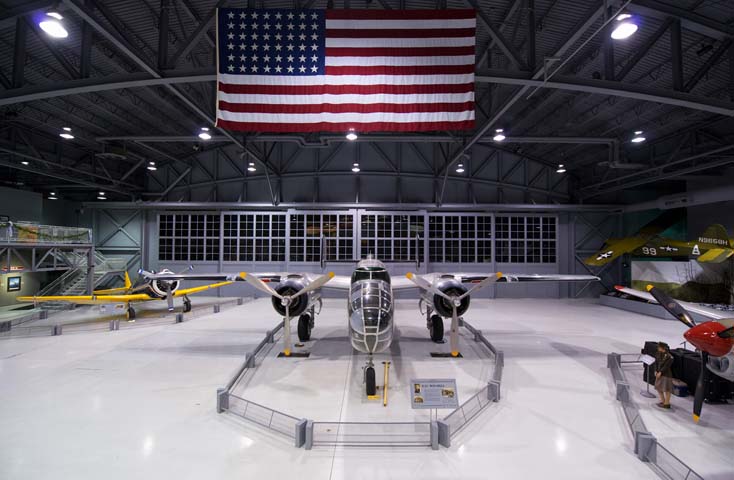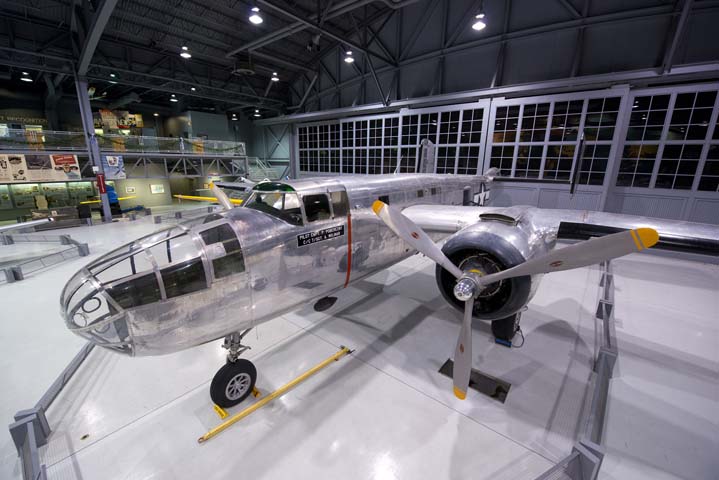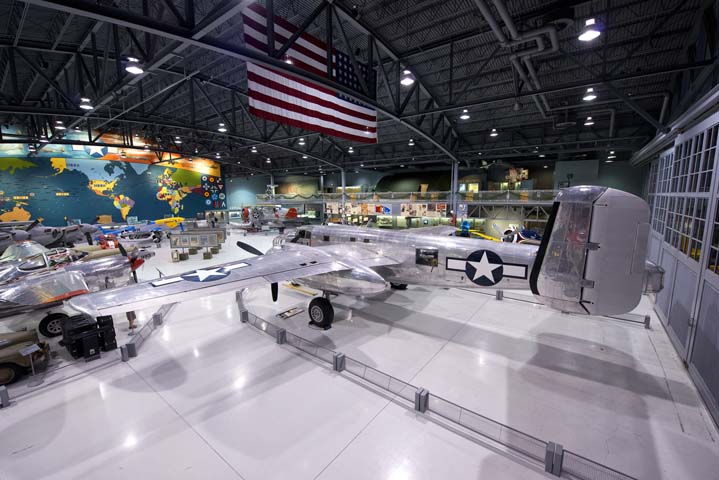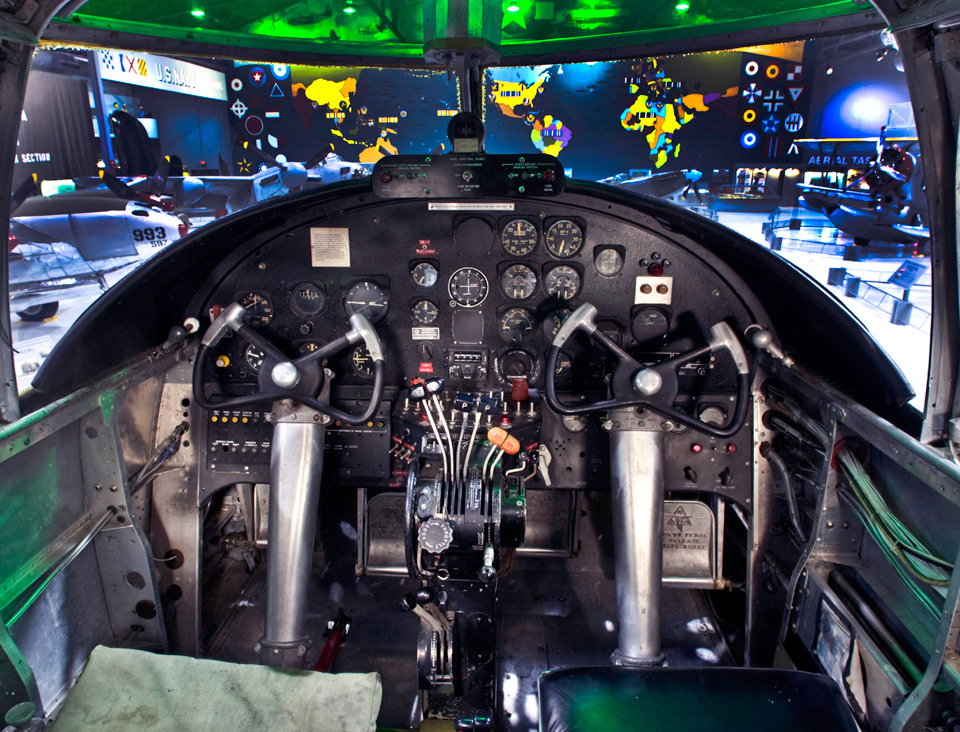1943 North American B-25H 'Mitchell' - N10V
Location: Weeks Hangar
Widely regarded as the best medium-class bomber of World War II, the North American B-25 Mitchell served in all theaters of operation during the war. The B-25 was designed in 1939 by the North American Aviation Company, and was named in honor of Maj. Gen. William “Billy” Mitchell (1879-1936), one of the earliest and strongest advocates for American airpower. From 1940 to 1945, nearly 10,000 B-25s were built by North American, more than any other U.S. twin-engine bomber, at plants in Inglewood, California, and Kansas City, Kansas.
A versatile aircraft, the B-25 Mitchell was used in the Pacific and Mediterranean theaters for bombing, ground attack, anti-ship and submarine patrols, reconnaissance, and transport. The B-25 featured twin radial piston engines, twin vertical stabilizers, retractable tricycle landing gear, a bomb bay, and machine gun turrets. With the installation of a 75 mm cannon, the B-25 became the first production aircraft in the world to carry artillery.
On April 18, 1942, Lt. Col. James “Jimmy” Doolittle led 80 airmen in 16 B-25s on the first U.S. air raid against Japan. Planned in secret as retaliation for the Japanese attack on Pearl Harbor, the B-25s were able to reach Tokyo by taking off from the deck of the aircraft carrier Hornet. Doolittle’s raid demonstrated that Japan was vulnerable to attack, and it boosted American morale at a crucial time during the war.
EAA’s B-25H (serial number 43-4432) was built at Inglewood in 1943. The aircraft is believed to have served with the U.S. Army Air Forces, and it may have flown in combat.
Our B-25H was sold as surplus after the war and owned by a succession of manufacturing companies, and in the mid-1950s was converted to an executive transport by Woolworth heiress Barbara Hutton. It was then flown by Long Island Airways of New York City during the 1960s, and later appeared as Berlin Express in the 1970 movie Catch-22.
The North American B-25H Mitchell was originally restored from 1975 to 1985 by EAA volunteers led by Bud Labutski of Burlington, Wisconsin and, as of the summer of 2016, is currently undergoing another major restoration.
Aircraft Make & Model: North American B-25H Mitchell
Length: 51 feet 4 inches
Wingspan: 67 feet 7 inches
Height: 15 feet 9 inches
Empty Weight: 19,600 pounds
Gross Weight: 35,000 pounds
Crew: 6
Powerplants: Two Wright R-2600-13 Cyclone 14-cylinder radial engines
Horsepower: 1,700 hp at 2500 rpm at sea level
Cruise Speed: 230 mph
Maximum Speed: 275 mph at 13,000 feet
Armament: Originally, one 75 mm cannon in nose, four .50-caliber guns in nose, four .50-caliber blister guns on forward fuselage, two .50-caliber guns in top turret, two .50-caliber guns at waist stations, and two .50-caliber guns in tail turret, and up to 3,000 pounds of bombs.




